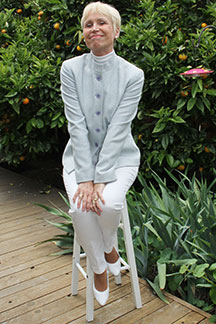Last week, I received the first review of Walled-In: A West Berlin Girl’s Journey to Freedom. It came from Laurel-Rain Snow and was posted on Goodreads and Laurel’s blog. When I read her review I was so thrilled that I did not sleep all night. Laurel gave Walled-In 5 of 5 stars! Here is what she had to say about Walled-In:
Laurel-Rain‘s review
May 15, 13
5 of 5 stars
Read from May 11 to 15, 2013
Tyranny takes many forms, from the restrictions of freedom imposed by governments to the familial constraints that markedly prevent an individual’s personal growth.
Growing up in post-war Germany, the author shows the reader what her world looked like, both at home and on the larger canvas that was her life within Berlin after the building of the Wall.
“Walled-In” reveals much about the young woman’s pursuit of individual freedom, and as I read about her personal struggles and the family dynamics, much of it tolled a familiar bell for me.
Our lives did not mirror one another’s, since I grew up in the US and did not face the governmental restrictions that dictated her life; however, the era in which we were each born was very similar and the family dynamics I experienced echoed hers. I could totally relate to her feelings and rooted for her escape.
My escape was made simpler by the governmental freedoms I enjoyed, but freedom from any tyranny can feel just as exhilarating, no matter how different the cage may be.
Other aspects of the story were wonderfully drawn, from the historical context in which she grew to the world at large that offered opportunities for change. This was a beautifully told story that is even more inspirational because of the parallels between Berlin under siege and the uncompromising world of family. Five stars.
Laurel-Rain Snow is an Amazon Vine reviewer and has a goal of reading 200 books a year. Follow her reviews on her blog, http://www.snowconnections.wordpress.com.Walled-In will be released in ten days. Let me know if you agree with Laurel’s assessment.
For a sneak peek at the first 20+ pages of my memoir, Walled-In: A West Berlin Girl’s Journey to Freedom, click “Download a free excerpt” on my home page and feel free to follow my blog about anything German: historic or current events, people, places or food.
Walled-In is my story of growing up in Berlin during the Cold War. Juxtaposing the events that engulfed Berlin during the Berlin Blockade, the Berlin Airlift, the Berlin Wall and Kennedy’s Berlin visit with the struggle against my equally insurmountable parental walls, Walled-In is about freedom vs. conformity, conflict vs. harmony, domination vs. submission, loyalty vs. betrayal.









